Got milk? They didn't have much of it in the Keys prior to the railroad opening in 1912, so when Gail Borden created sweetened condensed milk in 1859, the isolated residents rejoiced — they could finally invent key lime pie! They didn't even need to bake the pies, for the acidity of the limes curdled the condensed milk and egg yolks to form a smooth consistency. Think of how much trouble they saved by not having to haul cows and ovens in from the mainland! Nowadays it's even easier to enjoy Florida's most famous dessert, because it is sold and served just about everywhere in the state. Finding a captivating rendition, however, can be difficult. We say search no further than Bonefish Grill in Coral Gables, a "casual-upscale" seafood chain that proffers fresh fish dinners at affordable prices. Their sumptuous pies' crusts are traditional graham cracker, but with crunchy pecans; a dollop of freshly whipped cream luxuriates on top. Between those contrasting textures is a tall, pale cloud of tart, creamy custard — bigger and better than others of its ilk, and at $5.50 per hunky wedge, cheap.
Best Key Lime Pie
Bonefish Grill
Best Kibbe
Michael's Cafe

This Middle Eastern restaurant in Kendall is not a mirage. It was once a gas station next to the railroad tracks but has been transformed into an outdoor café that serves as an oasis for locals. There is live music almost every night and a vast assortment of ice-cold Middle Eastern beers. The large-screen TV sets are all tuned to Lebanese stations (in Arabic). You can get a hookah with flavored tobacco, and smoke while watching the live belly dancing Friday and Saturday nights. But best of all is the food, especially the kibbe, which costs $4.95 for two pieces. They make it fresh by combining crushed wheat with minced beef or lamb, sautéed onions, and pine nuts. The combination is then rolled into a ball and deep-fried, kind of like falafel. The kibbe platter comes with grape leaves, hummus, tabbouleh, lentil rice, and pita bread, and sells for $11.99. Wash it down with Michael's special Turkish coffee ($1.50), and forget about taking that trip to Israel.
- 9851 N. Kendall Dr., Palmetto Bay, 33176 Map
- 786-497-0841
- www.michaels-cafe.com
Best Kosher Cookies
Taam Gan Eden

"Me want cookie!"
"Okayyy," says the big yellow bird standing in front of the huge glass case. "They have chocolate linzers, vanilla cookies with vanilla cream in the middle and white chocolate on top, black-and-white sandwich cookies draped in white and dark chocolates, lace cookies that will melt in your mouth ..."
"Me want cookie!"
"All right," mumbles the grumpy green trash-can-dweller, breathing heavily and laying a nice coat of steam on the out-of-reach confections. "Over here they have vanilla fingers with strawberry jelly, Chinese cookies, elephant ears, chocolate teardrops."
"Me want cookie!"
"Fine! Here's your damn chocolate chip cookie!"
"Me eat cookie!" growls the big, blue, hairy beast as crumbs tumble from his mouth and off his chest.
- 1018 NE 163rd St., North Miami, 33162 Map
- 305-919-8444
- www.taamganedenbakery.com
Best Last Meal on Earth
La Quebradita Taqueria
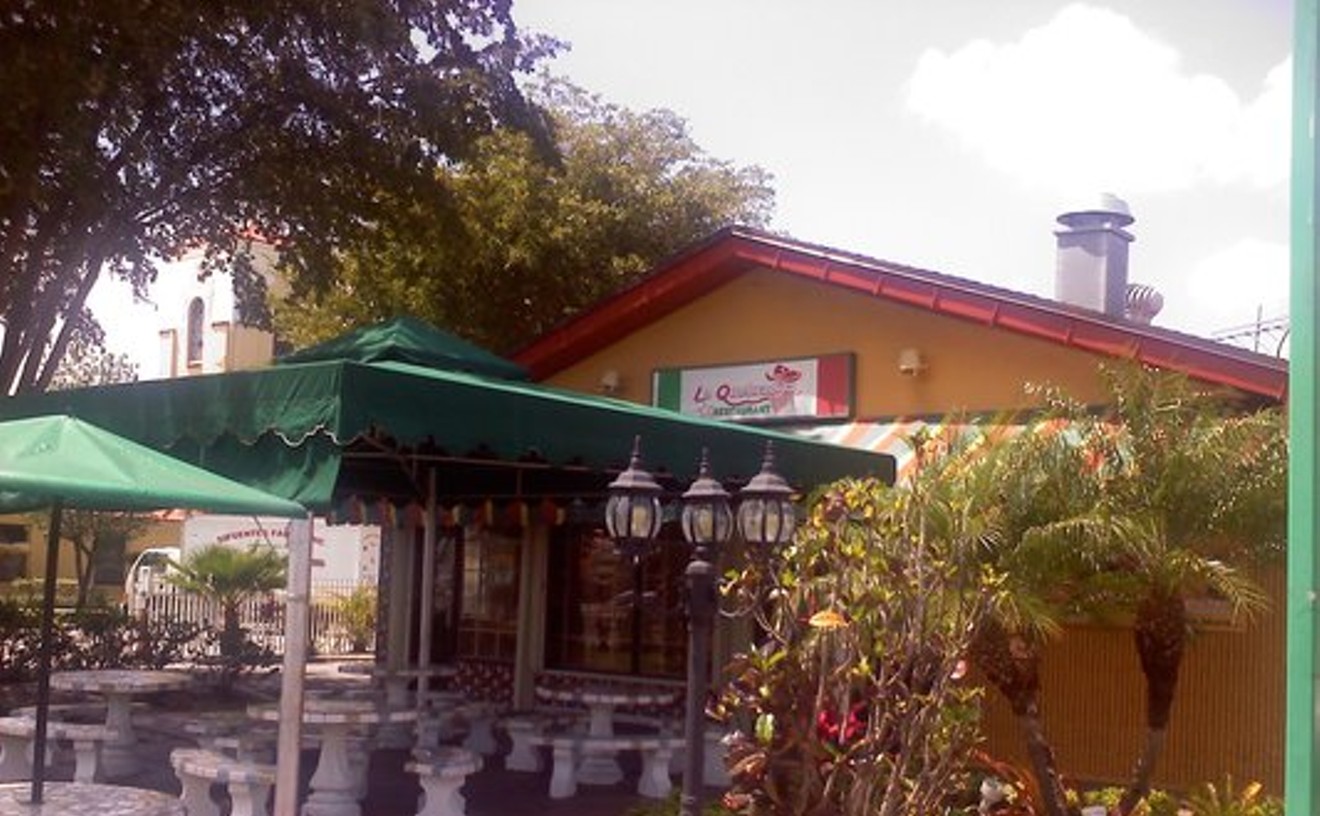
Fergus Henderson's last meal would consist of sea urchins, goat cheese, and dark butter chocolate ice cream (with Muscadet). Nobu Matsuhisa's not-surprising pick for a final feast includes a number of sushi selections capped by a cucumber roll. Daniel Boulud says he'd eat whatever Alain Ducasse would cook for him, and Gordon Ramsay would preface his eternity in Hell with a traditional English roast beef dinner with Yorkshire pudding and gravy. Evidently these well-regarded, well-heeled chefs lack romantic, Under the Volcano-type notions regarding finality: This is not the time for prissy or predictable fare, but a moment to savor the flavors of the earth before returning to it ourselves. That's why the humble, hearty Mexican food at La Quebradita Taqueria in Homestead is so fitting for a finale — more specifically, Quebradita's gordito ($3.95), a thick, fried tortilla bun bundled with pork, refried pinto beans, lettuce, tomatoes, and sour cream. And naturally salsa, chips, rice, beans, fried pork rinds (chicharrones), and a refreshing glass of rice-based horchata drink for $1.65. Plus a few Mexican beers ($3.50 a pop) to sort of take the edge off things. And perhaps a taco to go?
- 702 N. Krome Ave., Homestead, 33030 Map
- 305-245-4586
- laquebraditagrill.com/
Best Late-Night Dining
Buena Vista Bistro
"Labor of love" is a cliché, but it's an accurate description of this new neighborhood eatery, owned by a charming May/December married couple: Callie Postel, who runs the front of the house, and her husband Claude (who had several restaurants in Quebec before relocating to Miami), who helms the kitchen, cooking up evocative French comfort food (plus a few Italian dishes) with a smile. Diners get huge portions of honest fare (starters such as rillettes du mans, a rustic pâté-like spread served with cornichons, Dijon mustard, and crusty bread; and full entrées including moist-centered roast salmon with ratatouille), at minuscule prices (starters $5 to $8, most entrées $8 to $14). But even better are the hours: seven days a week 11 a.m. to midnight. On weeknights, that's pretty late even for SoBe, and it's plenty late for midtown dining after catching a show at the performing arts center, a game at the arena, or some art exhibits on gallery night. This bistro fits the classic French definition: a convivial neighborhood place where folks can drop in for a glass of wine and a bite to eat any day at all hours.
Best Latin Market/Cafeteria
El Nuevo Siglo Supermarket
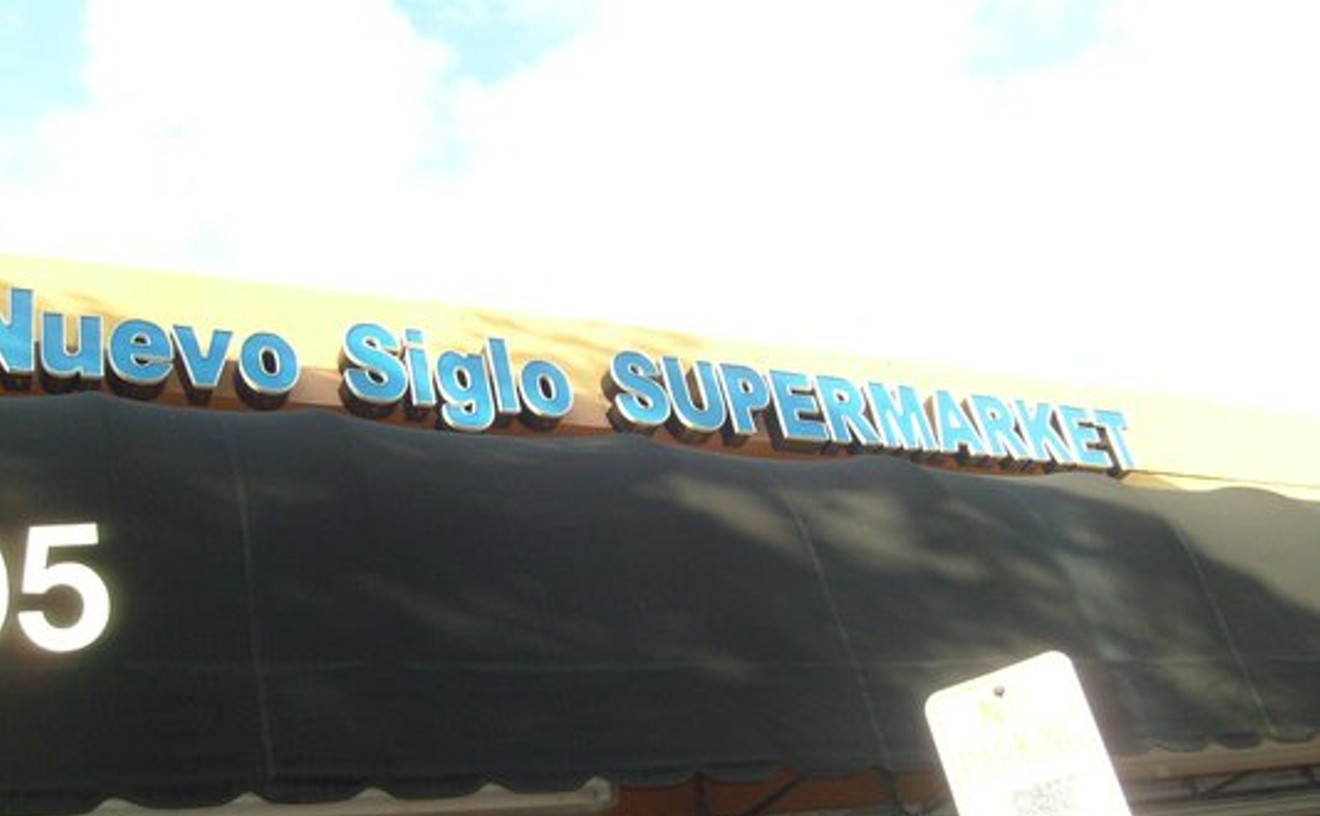
When it comes to Latin cafeterias, Miami takes a back seat to no American city. Heck, we probably have more of them than New York has McDonald's restaurants. And we should be thankful for this, especially for the gems of the genre such as El Nuevo Siglo Supermarket in Little Havana. The brightly illuminated, family-owned grocery store contains all the staples for Hispanic cooking, as well as a meat counter and a little Old World-style bakery that kicks out mean made-on-premises chorizo and an authentic Argentine empanada de carne (that's where the mom-and-pop owners come from). The cafeteria counter in back is lengthy. And the menu encompasses vaca frita, arroz con calamari, a peerless ropa vieja, and a huge churrasco steak, with sides, for just $8 a plate. The beef for these dishes, and for a wondrous pan con bistec, is cut and trimmed by the in-house butcher. Sorry, pero no se habla inglés aquí.
- 1305 SW Eighth St., Coral Gables, 33145 Map
- 305-854-1916
- elnuevosiglousa.com/
Best Macaroons
Alisa's Painted Bistro
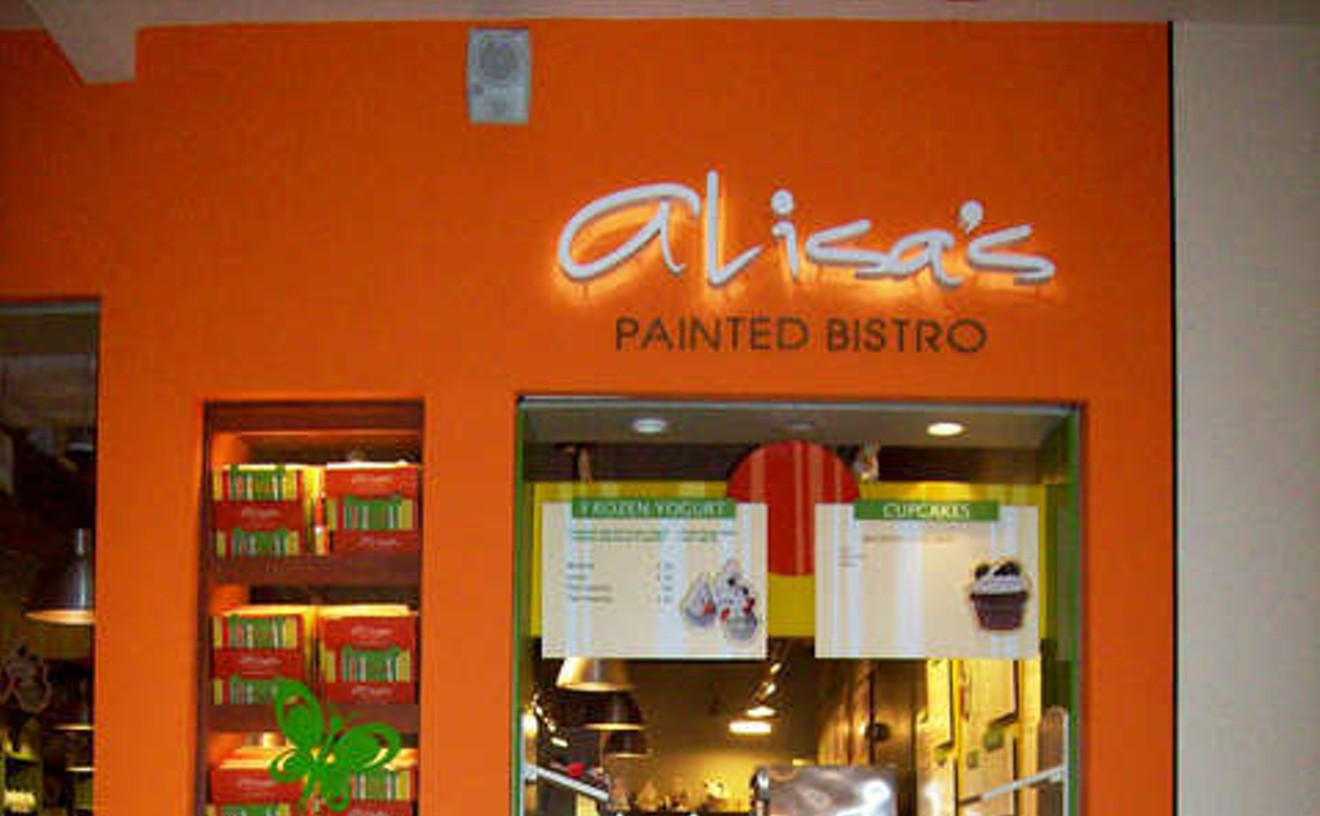
These buttery, coconut-infused treats are nearly the size of hockey pucks. And they might be as heavy. Browned to perfection on the crisp outside, melt-in-your-mouth tender within, and dense with some sort of coconut-flavored lava, the rich mega-morsels sell for $1.85 each — dirt-cheap considering they are a meal in themselves. Make sure you have a glass of cold water or milk, or you might just explode from all of that concentrated sweet butteriness. The food counter, which also offers delicious cupcakes and cookies, shares space with Color Me Mine, where you can choose from more than 400 ceramic pieces to paint and fire up in the kiln. Trust us, you'll need something to do once that sugar rush hits. The coconut flakes will leave you chewing long after you've polished off the macaroons. And you will like it.
- 19015 Biscayne Blvd., Aventura, 33180 Map
- 305-931-4470
- www.alisasbistro.com
Best Mobile Sushi
Katana Restaurant
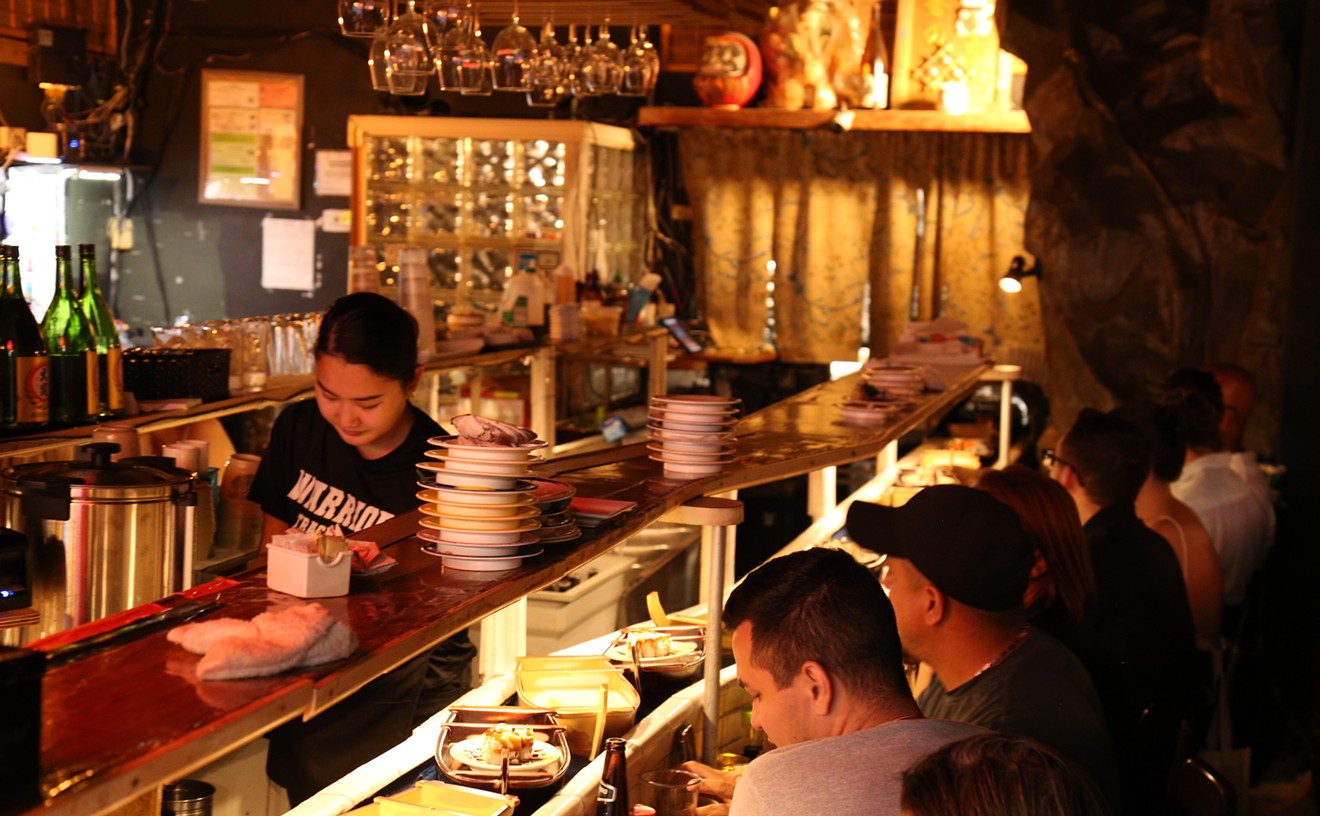
Like your fish fresh off the boat? Get it, quite literally, at Katana Restaurant on Normandy Isle. Walk through the glass front door, lit red with neon lights, and take a seat at the river.
Yes, the river. Instead of what Western tourists in Japan call a sushi-go-round, where sashimi and rolls ride a conveyor belt that winds by every seat in the restaurant, Katana opts for boats. After you settle at the bar and place a drink order (a large sake costs just $5.70), all that's left to do is wait for your dinner to float downstream. The dishes include eel, rainbow, and an assortment of tempura rolls. Like your fish raw? Try the tuna, white fish, and salmon sashimi. And for the brave (or just plain curious), there's a squid salad or visually striking egg-based surprises that leave a toasty feeling in your stomach.
And don't get distracted by the aggressive diners, Y-100 jams, or the sushi chef's unnaturally tall Rasta-style hat. You must keep track of the colors of your plates. They represent different prices, which are displayed on the restaurant's east wall. The cheapest one, which is green, costs $1.50. The most expensive, the black or gold plate, is $3.50. If you sample too many — or maybe overindulge in the wonderful variety of foreign beers — you might leave wishing you floated over to Mickey D's for some cheapo American fast food.
- 920 71st St., Miami Beach, 33141 Map
- 305-864-0037
- www.katanamiamibeach.com
Best Mozzarella
Vito Volpe's Mozzarita
That "fresh" mozzarella you buy at Publix or gourmet markets is unquestionably worlds better than the standard rubbery, flavor-free stuff. But it's nothing compared to the cheese made by Vito Volpe, from Puglia (Italy's muzz capital), an importer of Italian artisan products who began selling his own totally homemade — and made fresh daily — mozzarella when he moved to Florida a bit more than a year ago. His simple and perfect Mozzarita ($8 per ball), one of the tastiest things to ever happen to cow's milk, was the sensation of this year's new Upper Eastside Green Market. And the newly addicted needn't fret now that market season is over; Vito's mozzarella is available year-round — along with his equally fresh ricotta, trendy cream-filled burrata, and scamorze (a drier aged mozzarella, ideal for pizzas) — at Casa Toscana Fine Foods and Wines (9840 NE Second Ave., Miami Shores 33138; 305-757-4454).
Best Muffins
Taste Bakery Cafe
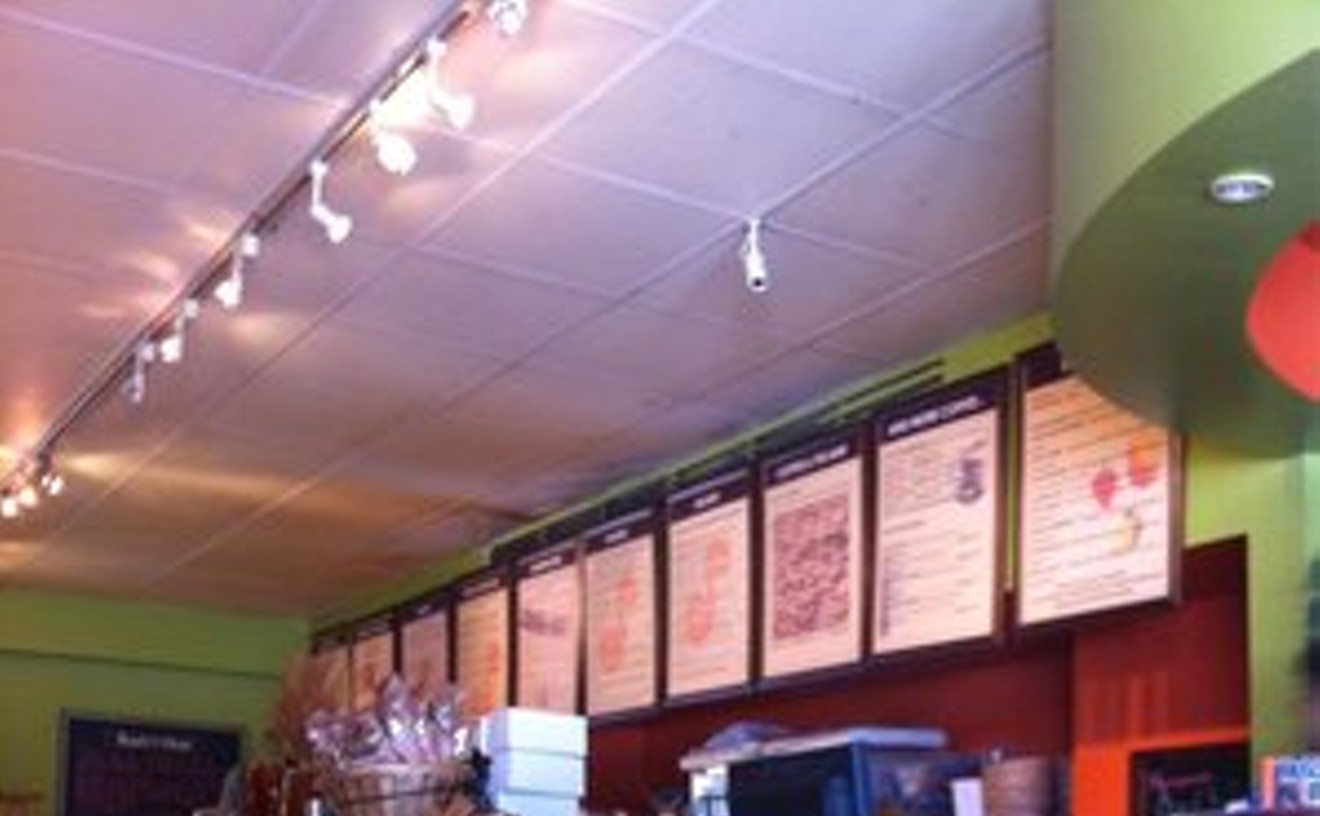
Long ago, nutritionists ruined breakfast by telling us muffins have as much fat as double cheeseburgers. So head to Taste Bakery Café, where they don't steal any muff-a-licious joy by posting diet information. All you need to know is that their muffins are as big as two fists and baked daily. Selling for $2.89, varieties include pistachio, carrot-raisin, banana-nut, orange-cranberry, lemon-poppy, and blueberry. Don't be a spoiled sport and order sugar-free or fat-free options. The real deal is a thousand times better. Our favorite is the double mocha fudge, sliced in half, warmed on the grill, and drizzled with real, heart-clogging butter.
- 900 Alton Rd., Miami Beach, 33139 Map
- 305-695-9930
- www.tastebakerycafe.com






